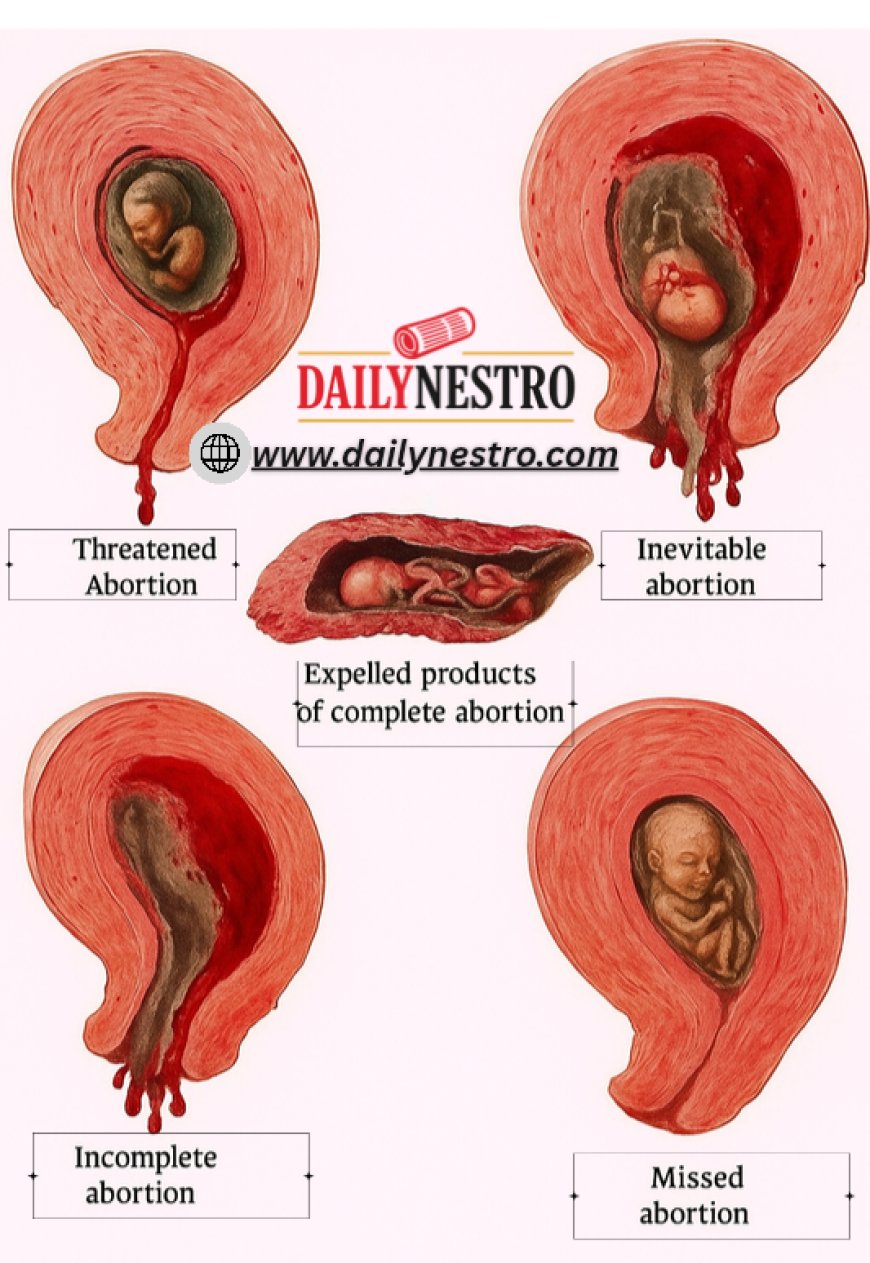Understanding Spontaneous Abortion: A Guide to the Different Types
TUnderstanding Spontaneous Abortion: A Guide to the Different Types

Understanding Spontaneous Abortion: A Guide to the Different Types
Spontaneous abortion, commonly known as miscarriage, is a difficult experience that affects many pregnancies. It refers to the spontaneous loss of a pregnancy before the 20th week. While the term can be emotionally challenging, understanding the different types of spontaneous abortion can help provide clarity during a confusing and often painful time. This guide, based on the provided illustration, explains the different stages and classifications of this common occurrence.
- Threatened Abortion
A threatened abortion is a warning sign that a pregnancy may be at risk. This stage is characterized by vaginal bleeding, which can range from light spotting to a heavier flow, often accompanied by mild cramping. Crucially, at this point, the cervix remains closed and the fetus is still viable inside the uterus.
The term "threatened" signifies that while the pregnancy is in jeopardy, there's still a chance it can continue to full term. Medical monitoring is essential to assess the situation and provide care, as many women who experience a threatened abortion go on to have a healthy pregnancy.
- Inevitable Abortion
An inevitable abortion indicates that a miscarriage is already in progress and cannot be stopped. This stage is marked by persistent bleeding and cramping, but unlike a threatened abortion, the cervix has begun to dilate (open) or efface (thin).
The illustration shows the fetus and surrounding tissue starting to detach from the uterine wall and move toward the cervical opening. At this point, the process of expelling the pregnancy is considered irreversible. Medical support may be necessary to manage pain and ensure the process is safe.
- Incomplete Abortion
An incomplete abortion occurs when some, but not all, of the pregnancy tissue has been expelled from the uterus. This is a common and serious complication of a miscarriage. Symptoms include heavy, ongoing vaginal bleeding and severe abdominal cramps, as the uterus contracts to expel the remaining tissue.
As the image shows, a portion of the tissue remains inside. This can lead to a risk of infection and continued blood loss. Healthcare providers often recommend a medical procedure, such as a Dilation and Curettage (D&C), to remove the remaining tissue and prevent further complications.
- Missed Abortion
A missed abortion, or missed miscarriage, is perhaps one of the most emotionally challenging types. In this case, the fetus has died inside the womb, but the body has not yet expelled it. There may be no obvious signs like bleeding or cramping, and the pregnancy may appear to be progressing normally.
A missed abortion is often discovered during a routine prenatal check-up when a fetal heartbeat cannot be detected. As the illustration shows, the deceased fetus remains within the uterus. Because the body hasn't recognized the loss, medical intervention is needed to remove the tissue, either through medication to induce the miscarriage or a surgical procedure.
- Expelled Products of Complete Abortion
A complete abortion signifies that the miscarriage has run its full course, and all of the pregnancy tissue has been successfully expelled from the uterus. The image shows the expelled tissue, including the fetus and placental material, outside the uterus.
After a complete abortion, bleeding and cramping typically subside as the uterus empties and returns to its normal state. In most cases, a complete abortion doesn't require further medical procedures, though a follow-up with a healthcare provider is recommended to confirm the uterus is empty and to ensure there are no signs of infection.
- Understanding the terminology around spontaneous abortion can help individuals and their loved ones navigate this difficult journey with greater knowledge and clarity. If you are experiencing any of these symptoms, it is crucial to seek immediate medical attention for proper diagnosis and care.
SUBSCRIBE OUR NEWS LETTER AND FOLLOW US ON FACEBOOK FOR MORE KNOWLEDGE







